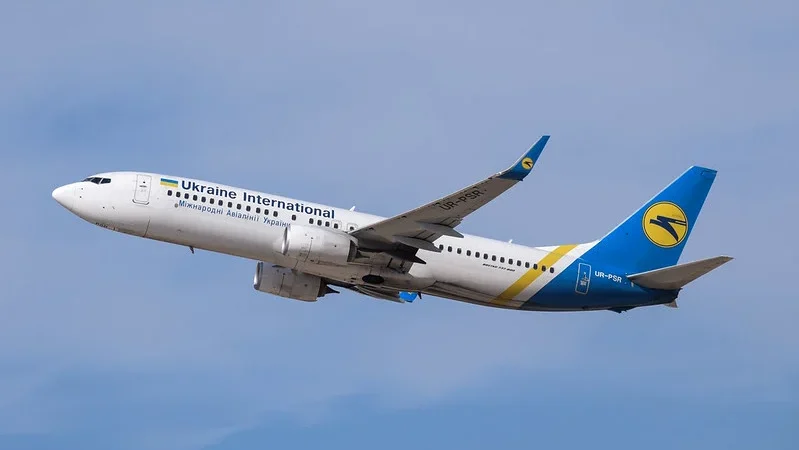Comment: Change inevitable in wake of PS752 court ruling
Andrew Nicholson is CEO of risk management company Osprey Flight Solutions
Last month, Ontario’s Superior Court ruled in favour of the victims’ families of the Ukraine Flight, UIA PS752, shot down over Tehran by The Islamic Revolutionary Guard Corps in January 2020. Here, Andrew Nicholson, CEO of the world’s leading aviation security and risk management firm, predicts a pivotal moment for world aviation safety and liability.
Flight PS752 was shot down shortly after departing Tehran airport, resulting in the loss of 176 lives, and the judgement issued by Ontario’s Superior Court on 10th June has significant implications for the entire aviation industry. Crucial for all airlines around the world to understand, the court’s finding that UIA has unlimited liability under the internationally recognised Montreal Convention calls for radical change if similar tragedies are to be avoided and airlines are not to face an existential risk of liability.
On behalf of a number of leading airlines around the world, the Osprey platform uses large amounts of data and sophisticated technology to evaluate the overflight risks of thousands of planned departures daily, and are seeing the potential threats at close hand. All airlines of course prioritise the safety of passengers and crew, however the challenge of security in volatile regions is especially acute and difficult to manage.
Traditionally, airlines have relied heavily on guidance from regulators and governments regarding airspace safety and overflight risks. However, as this case clearly demonstrates, such information is often delayed, classified, or influenced by political considerations. The outcome of the PS752 case underscores the growing risks and liabilities facing airlines and the industry rapidly needs to adjust to this. The PS752 ruling comes at a time of heightened global tensions and increased instability, underlining the urgency for improved risk management in aviation.
In this case, it just happened to be Ukrainian International Airlines, but to be frank it could have been any operator that was affected by this situation, it was not an airline specific issue. What the Canadian ruling has shown is that the impact of such an event goes beyond the terrible tragic loss of life. Operators carry this risk of unlimited liability, making the need for mandatory risk assessments, for regulated, forward looking, pre-emptive risk management a clear requirement in need of advocacy.
Every flight should undergo a thorough evaluation of potential threats. By integrating advanced technologies alongside a culture of proactive security management, airlines can better protect their passengers and crews, preventing tragedies like PS752 from occurring in the future.
This will mean ensuring all airlines have access to accurate and timely information about the security landscape, along with well-defined mitigation measures for emerging risks. Faced with litigation and as we’ve seen unlimited liability, auditable, ICAO-compliant trails of decision-making will become essential to demonstrate due diligence and accountability.
Whilst the importance of adopting proactive risk management systems, with a focus on real-time monitoring and decision-making has become increasingly clear, it is evident that not all aviation security teams have the capacity or resource to monitor the landscape continuously, let alone to automatically and systematically run updated risk assessments without technology. It is this degree of inconsistency in risk management practices that is exposing gaps in safety protocols, especially given the growing number of volatile regions around the world.
Recent advancements in technology have introduced robust solutions to these challenges, providing real-time visibility of evolving security situations that provide actionable intelligence. My firm, Osprey Flight Solutions, assesses the risk for nearly 50,000 flights per day using a variety of these technologies, offering automated real-time assessments, delivering up-to-the-minute information that helps airlines manage risks more effectively. Proactive risk management is enabled by using predictive intelligence to identify changes in the risk environment. Artificial Intelligence (AI) analytics and machine learning are integral in identifying patterns, trends, and anomalies. This enables airlines to respond promptly to potential threats while gaining a comprehensive understanding of untreated and treated risk scores, supporting informed decision-making.
This week, on the 10th anniversary of the separate but equally tragic shootdown of the Malaysian Airlines flight MH-17, I have been in Warsaw, Poland presenting the world’s inaugural conference on overflight risk, an iniative I called for, in partnership with the European Union Aviation Safety Agency (EASA) and the University of Southampton, and it was attended by many of the world’s leading airlines, government bodies and organisations who have an interest in air safety and aviation.
What is abundantly clear from the discussions which took place – and God forbid we see another plane brought down in a world of increasing geopolitical unrest – is that the implications of the Canadian court ruling will reverberate, because it won’t take much for other rulings to follow suit, and with that a potentially catastrophic rewriting of the world insurance market’s take on overflight risk.
